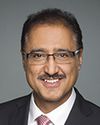Thank you, Madam Chair.
Once again, I appreciate the questions and comments.
I was a mayor for the past 14 years, and I'm sure some of my colleagues have been for quite some time as well. We recognize the needs. Quite frankly, again, congratulations on being very consistent with those needs. You're listening not only to the FCM and to some extent the provincial organizations, but obviously, based on your comments and your answers, you're hearing a lot from the mayors of big and small communities. Again, in terms of your comments, it's consistent with what they're saying.
In regard to focusing, this is what we hear a lot of at the municipal level. We hear about focusing on how infrastructure investments are becoming economic enablers, not only with respect to economic development but also with respect to sustainability within our communities, within asset management, lifespan, repair and maintenance, and of course, eventually and inevitably, replacement.
As I mentioned earlier, Mr. Minister, with respect to transportation, for example, transportation corridors and investing in those areas, ports, and of course border regions and border gateways, you once again correctly identified in your comments and answers additional investments that lend themselves to economic sustainability.
With that, Mr. Minister, the 2016-17 main estimates propose a 5% decrease in the planned spending by the Jacques Cartier and Champlain bridges, as was mentioned earlier, incorporated with a related reduction in the project scope for repairs to the ice-control structure and the Bonaventure Expressway. In what manner did the project scope for repairs to the ice-control structure and the Bonaventure Expressway decrease?






